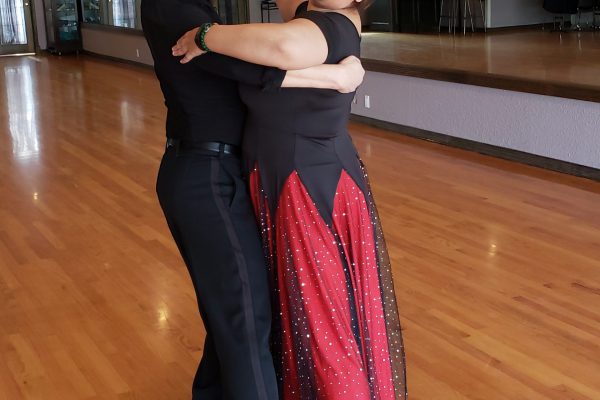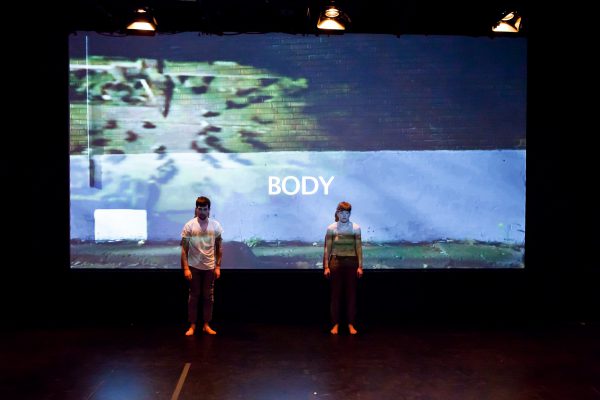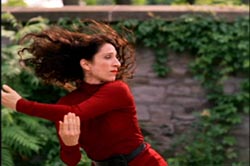Double Feature was created by River Waterhen and Kean Buffalo; it premiered on Sept. 30 and is available on demand until Nov. 5. Produced by Citadel + Compagnie, Night Shift festival is co-presented by Fall For Dance North.
As many Canadian institutions and individuals marked the first recognized National Day for Truth and Reconciliation in varied and personal ways, Citadel + Compagnie’s Night Shift presented Double Feature, a show with two Indigenous hip hop artists from Treaty Six territory: River Waterhen and Kean Buffalo.
The piece begins like a casual evening amongst friends with a group of young people sitting on what look like park benches. They chat and show each other whatever interesting things may be appearing on their phone screens; they sit in a pedestrian moment of rest and leisure.
Waterhen emerges into the centre space as the lights change to show the online audience a reflection of his internal world. Everything has faded away behind him. He moves with gentle honesty and a lowered gaze. The typical percussiveness of hip hop is softened with grace and solemn intent.
The light shifts into a more intense and warm tone as Buffalo bursts into a solo, abruptly replacing Waterhen. The audience gets a glimpse into another young Indigenous man’s world, two coinciding and complementary spaces.
Waterhen emerges again, thrust forward by the cool, white backlighting, yet still not quite addressing the audience. Subtle traces of ancestral knowledge bubble to the surface of his body and movements, with echoes of pow wow dancing and of smudging. It is both dance and pedestrian/sacred movement; Waterhen presents “human” and “dancer” not as dichotomy but as a whole essence of being. He creates a pattern across the floor, advancing and shying away, ending in a criss cross position sitting on the floor.
Buffalo steps in again, directly replacing Waterhen in the same position. Again, lights change to much warmer tones. Buffalo’s movement is more direct and outward-facing than Waterhen’s. He presents a passionate scene, involving his face with fiery emotion, mouthing along to the song that plays. He makes direct eye contact with the camera for the first time in the piece, as if to ask the audience to no longer look but to see and bear witness.
Buffalo presents a motif of running his fingers through the hair – perhaps an echo of Waterhen’s smudging.
The piece ends more abruptly than it began, with a sudden fade, Buffalo back in the criss-cross position Waterhen had left to him.
The dancers sitting on the bench remain hidden in the darkness, no longer a part of the two dancers’ scene.
I saw two different experiences of pain in this piece, and two different ways of expressing and being with that pain. On a day of remembrance for Indigenous children, I felt a love and passion that carries and honours Indigenous pain without dismissing it.
Tagged:






